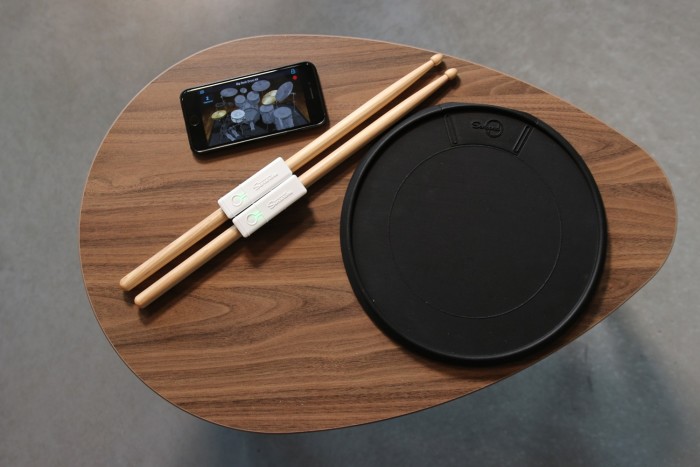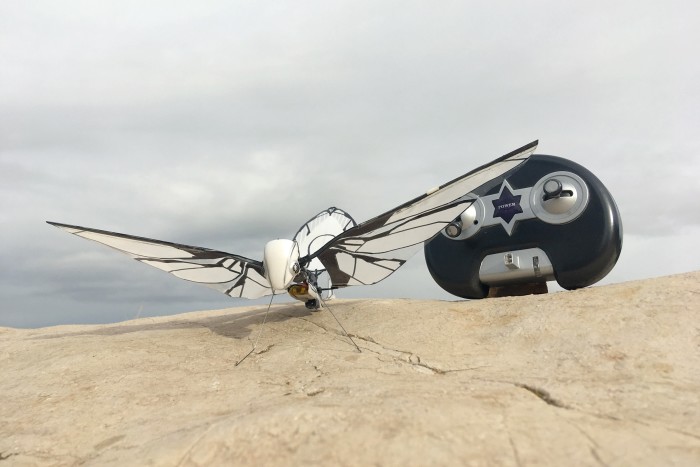Four gadgets for summer fun

Roula Khalaf, Editor of the FT, selects her favourite stories in this weekly newsletter.
A stellar digital telescope
There’s a furore among amateur astronomers about this revolutionary new point-and-shoot telescope from Montpellier, which does away with layers of expertise and kit to make it possible to take stunning photos of the heavens with minimal skill. Disgruntled astrophotographers say you’re not really seeing space with your own eyes because you view on your iPad or phone. Fair enough. But, for the rest of us, the Vaonis Stellina has a skyful of stellar features. It uses GPS to set itself up, then its motors find the heavenly feature you’re looking for and auto-focus. There’s even a mode to cancel the effects of light pollution – and you can have a star party with up to 20 people watching the action on their own devices.
Vaonis Stellina, £4,999, smartech.buzz


A clip-on camera for hands-free vlogging
Opkix’s incredibly tiny video camera – it weighs 12g in spite of having 1,300 components – is like an ultra-miniature GoPro, ideal for recording up to 15 minutes of footage. It even works underwater, and the HD picture quality is really high and well stabilised. The beauty of Opkix is that, in keeping with the video-blog world, where I think they will be popular, they can be attached to a series of specially made accessories that come in the top dog, two-camera One X bundle. Film hands-free from a pair of men’s or women’s sunglasses, the peak of a baseball cap, a stick, a ring or a necklace. The latter two strike me as a bit daft, but a fairly inconspicuous, clipped-on glasses camera could be a lot of fun.
Opkix One X bundle, £599, smartech.buzz

The ultimate virtual drum kit
Occasionally, when I’m in buoyant mood, I will drum along to some percussion-heavy music I’m fond of, using anything around – chair arms, cushions, desk – as surrogate drums. It’s a habit which, as far as I can tell, I share with only about a billion of my fellow humans – including, unexpectedly, The Rolling Stones’ 79-year-old drummer Charlie Watts, who appeared playing phantom drums at his Devon home on the One World: Together At Home coronavirus benefit gig in April. With the drum soundtrack for You Can’t Always Get What You Want prerecorded, Watts used some boxes as pretend drums and the back of a tall armchair as a hi-hat. (It turned out that he doesn’t have a drum kit at home because his wife hates the noise.)
Being able to drum silently but produce sound on headphones was one of the reasons that Aerodrums has been so successful. Drummers’ partners, children and neighbours tend not to love drumming.
But now there’s a French rival to the Liverpool-based Aerodrums that I and, more significantly, my drummer daughter-in-law believe has the edge. While Aerodrums uses cameras to track your hands and feet, and requires near-darkness to work well, with Senstroke, you slip a Bluetooth-enabled sensor onto each drumstick and each foot, pair with an app, and, voilà, you’ve got a drum kit.
The tactile feedback from a stick hitting an object such as a table or cushion isn’t quite the same as from hitting a real drum, but it’s more satisfying than the sensation of drumming air. And you can calibrate different objects in different positions to emulate different drum sounds. Daughter-in-law toyed with the idea of using a glass and porcelain cake stand as a cymbal, and then wisely un-toyed with it.
Senstroke is not just a bit of fun, although it is definitively that. In combination with a phone or tablet app (tablet is better), you can use it to learn drums from scratch, or to polish and practise your skills. The accompanying app is extensive, effective and serious.
Senstroke, from €160, senstroke.com

A demonically good insect drone
People have been trying to fly by flapping their arms (with wings strapped on) since at least the 11th century. It took Leonardo da Vinci to work out that our arms aren’t strong enough in proportion to our bodies for us to take to the air, whatever wing-like apparatus we’ve trussed ourselves up in.
Human ingenuity, however, has enabled us to recreate natural flight in miniature. Model birds that can fly, known as ornithopters, have been around since the 19th century. Most have just been jeux d’esprit, but hawk models have been used to chase birds away from airports and they could have a surveillance use.
But this radio-controlled giant insect, MetaFly, from a startup in Marseilles, is not only the first ornithopter I have ever featured, but is perhaps the most frightening-looking product I have seen. With its tissue paper-thin carbon-fibre and polymer wings flapping at near insect speed, it’s akin to a vision from hell, sounds horrifying – and I love it for all that. There are a few ornithopters on the market, but only a couple are radio-controlled and none that I could find takes the form of an insect.
MetaFly is technically a drone, although at less than 10g in weight, it’s not the kind that needs a permit to fly in the UK – only drones above 250g require licensing. You can release MetaFly outdoors on a very calm day and reach 20kph over 100m range, flapping and gliding – more like a bird than an insect – for eight minutes on a 12-minute charge. Control is precise, if an acquired art, but with MetaFly’s ridiculous lightness, a crash is rarely damaging. It’s also fine flying indoors, but you need a huge room to fly successfully.
To build a motorised radio-controlled machine, with a decorative insect head for terrifying visual effect, at well under half an ounce is a magnificent feat of strange Gallic engineering. Assembly is tricky, and requires patience and strict adherence to the detailed video instructions on Vimeo – livened up amusingly for me by distinctly French ambulance sirens in the background at one point, possibly coming to take the inventors away. Even when it’s not flying, it’s a great display piece. And the same company also makes a MetaBird, which I am looking forward to trying.
MetaFly, from €89, bionicbird.com
Comments